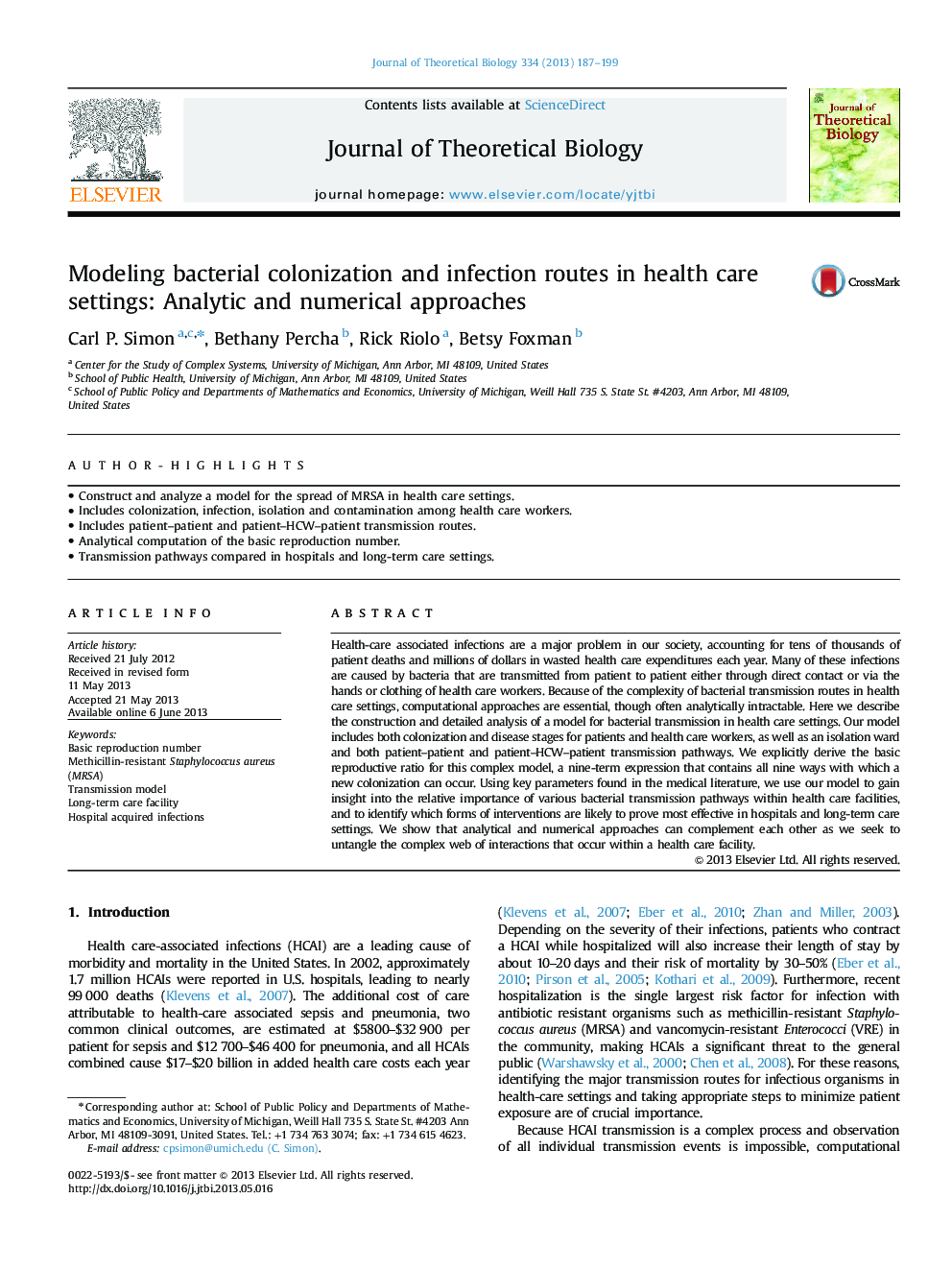| Article ID | Journal | Published Year | Pages | File Type |
|---|---|---|---|---|
| 6370884 | Journal of Theoretical Biology | 2013 | 13 Pages |
Abstract
Health-care associated infections are a major problem in our society, accounting for tens of thousands of patient deaths and millions of dollars in wasted health care expenditures each year. Many of these infections are caused by bacteria that are transmitted from patient to patient either through direct contact or via the hands or clothing of health care workers. Because of the complexity of bacterial transmission routes in health care settings, computational approaches are essential, though often analytically intractable. Here we describe the construction and detailed analysis of a model for bacterial transmission in health care settings. Our model includes both colonization and disease stages for patients and health care workers, as well as an isolation ward and both patient-patient and patient-HCW-patient transmission pathways. We explicitly derive the basic reproductive ratio for this complex model, a nine-term expression that contains all nine ways with which a new colonization can occur. Using key parameters found in the medical literature, we use our model to gain insight into the relative importance of various bacterial transmission pathways within health care facilities, and to identify which forms of interventions are likely to prove most effective in hospitals and long-term care settings. We show that analytical and numerical approaches can complement each other as we seek to untangle the complex web of interactions that occur within a health care facility.
Keywords
Related Topics
Life Sciences
Agricultural and Biological Sciences
Agricultural and Biological Sciences (General)
Authors
Carl P. Simon, Bethany Percha, Rick Riolo, Betsy Foxman,
